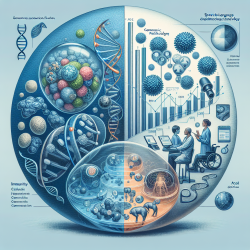Introduction
Autism Spectrum Disorders (ASD) are complex neurodevelopmental conditions characterized by challenges in social communication and repetitive behaviors. Among the myriad of research avenues, Brainstem Auditory Evoked Potentials (BAEPs) have emerged as a significant tool for exploring auditory processing in individuals with autism. The study "Brainstem Auditory Evoked Potentials in Boys with Autism: Still Searching for the Hidden Truth" provides valuable insights into the auditory processing anomalies in children with autism, which can be pivotal for practitioners aiming to improve therapeutic outcomes.
Key Findings
The study examined BAEPs in 43 boys with autism and compared them to age-matched typically developing controls. The findings revealed that while the mean values of all absolute and interpeak latencies were longer in the autism group, these differences were not statistically significant. However, a significant subset of the autism group exhibited prolonged or shortened latencies, suggesting a distinctive pattern of auditory processing.
- 33% of children with autism showed prolonged or shortened absolute/interpeak latencies compared to 9% of controls.
- Prolongation of absolute latencies I, III, and V, and shortening of interpeak latency I-V were common findings.
- 23% of children with autism had BAEPs indicative of clinically abnormal responses.
Implications for Practitioners
These findings highlight the potential of BAEPs as a diagnostic tool to identify subsets of children with autism who may benefit from targeted interventions. Here are some practical steps for practitioners:
- Incorporate BAEPs in Assessments: Use BAEPs to identify children with atypical auditory processing, which may guide individualized intervention plans.
- Focus on Brainstem Plasticity: Recognize that the brainstem exhibits experience-dependent plasticity, particularly in speech encoding, and tailor interventions to leverage this plasticity.
- Collaborate with Researchers: Engage in or support further research to explore the therapeutic applications of BAEPs findings in autism.
Encouraging Further Research
While the study provides significant insights, it also underscores the need for continued research. Practitioners are encouraged to collaborate with researchers to delve deeper into the implications of BAEPs abnormalities and explore potential interventions that could harness brainstem plasticity for improved outcomes in children with autism.
To read the original research paper, please follow this link: Brainstem Auditory Evoked Potentials in Boys with Autism: Still Searching for the Hidden Truth.










